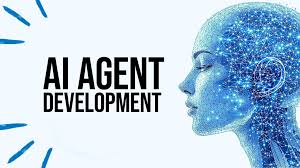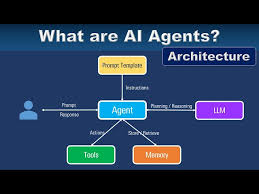
Table of Contents
Introduction to AI Agents
AI agents represent the next evolution in artificial intelligence - autonomous systems that can perceive their environment, make decisions, and take actions to achieve specific goals. In 2025, building custom AI agents has become more accessible than ever thanks to powerful frameworks like LangChain and advanced language models such as GPT-4.
This guide will walk you through creating your own AI agent capable of handling complex tasks, maintaining conversation context, accessing external data, and executing specific functions - all while leveraging the natural language understanding of GPT-4.
Technology Stack Overview
Our AI agent will be built using:
- GPT-4 (or GPT-4-turbo): OpenAI's most advanced language model for natural language understanding and generation
- LangChain: Framework for developing applications powered by language models
- Python 3.10+: Primary programming language for AI development
- FAISS/Chroma: Vector databases for efficient information retrieval
- FastAPI/Flask: Web frameworks for creating API endpoints
# Sample requirements.txt
langchain==0.2.0
openai==2.0.0
python-dotenv==2.0.0
fastapi==0.110.0
uvicorn==0.29.0
chromadb==0.5.0AI Agent Architecture
Our agent will follow a modular architecture with these key components:

- Core LLM (GPT-4): Handles language understanding and generation
- Memory Module: Maintains conversation history and context
- Tool Integration: Connects to external APIs and functions
- Knowledge Base: Provides domain-specific information via RAG
- Orchestrator: LangChain manages the workflow between components
Environment Setup
Let's set up our development environment:
1. Install Python and create virtual environment
python -m venv aiagent-env
source aiagent-env/bin/activate # Linux/Mac
aiagent-env\Scripts\activate # Windows2. Install required packages
pip install -r requirements.txt3. Set up OpenAI API key
Create a .env file with your OpenAI API key:
OPENAI_API_KEY=your-api-key-hereImplementation Steps
1. Basic Agent Initialization
from langchain.agents import initialize_agent
from langchain.llms import OpenAI
from langchain.chains import LLMChain
import os
from dotenv import load_dotenv
load_dotenv()
llm = OpenAI(model_name="gpt-4", temperature=0.7)
agent = initialize_agent(
llm=llm,
tools=[], # We'll add tools later
agent="zero-shot-react-description",
verbose=True
)2. Adding Conversation Memory
from langchain.memory import ConversationBufferMemory
memory = ConversationBufferMemory(memory_key="chat_history")
agent.agent.memory = memoryAdding Memory & Context
For more sophisticated memory handling, we can implement:
- ConversationSummaryMemory: Maintains condensed summaries of long conversations
- VectorStoreMemory: Stores memories in a vector database for semantic retrieval
- Custom Memory Classes: Tailored to specific application needs
from langchain.memory import VectorStoreRetrieverMemory
from langchain.embeddings import OpenAIEmbeddings
from langchain.vectorstores import Chroma
embeddings = OpenAIEmbeddings()
vectorstore = Chroma(embedding_function=embeddings)
retriever = vectorstore.as_retriever(search_kwargs=dict(k=1))
memory = VectorStoreRetrieverMemory(retriever=retriever)Extending with Tools
Tools enable your agent to interact with the external world. Common examples:
| Tool Type | Description | Implementation Example |
|---|---|---|
| Web Search | Access current information | SerpAPI, Google Search API |
| Calculator | Perform mathematical operations | LangChain's built-in calculator |
| API Connectors | Integrate with external services | Custom API wrappers |
| Database Access | Query structured data | SQLDatabaseChain |
Custom Tool Implementation
from langchain.tools import BaseTool
from typing import Optional
class WeatherTool(BaseTool):
name = "GetCurrentWeather"
description = "Useful for getting current weather in a location"
def _run(self, location: str):
# Implement actual weather API call here
return f"Weather in {location}: Sunny, 22°C"
async def _arun(self, location: str):
raise NotImplementedError("Async not supported")
agent.tools.append(WeatherTool())Deployment Options
Once developed, you can deploy your AI agent through:
API Endpoint (FastAPI)
Pros:
- Easy integration with other systems
- Scalable with load balancing
- Standardized interface
Cons:
- Requires API management
- Additional latency
Web Application
Pros:
- User-friendly interface
- Direct user interaction
- Rich visualization options
Cons:
- Frontend development required
- Higher maintenance
FastAPI Deployment Example
from fastapi import FastAPI
from pydantic import BaseModel
app = FastAPI()
class Query(BaseModel):
text: str
@app.post("/chat")
async def chat(query: Query):
response = agent.run(query.text)
return {"response": response}Performance Optimization
To enhance your AI agent's performance:
- Caching: Implement response caching for common queries
- Batching: Process multiple requests in parallel
- Model Optimization: Use GPT-4-turbo for better cost/performance
- Prompt Engineering: Refine system prompts for better accuracy
- Load Testing: Identify and address bottlenecks
# Example of prompt optimization
from langchain.prompts import PromptTemplate
template = """You are a helpful AI assistant with expertise in {domain}.
Current conversation: {chat_history}
Human: {input}
AI:"""
prompt = PromptTemplate(
input_variables=["domain", "chat_history", "input"],
template=template
)Conclusion & Next Steps
You've now built a functional AI agent using GPT-4 and LangChain! This foundation can be extended in numerous ways:
- Add more specialized tools for your domain
- Implement more sophisticated memory systems
- Integrate with enterprise systems
- Add multimodal capabilities (images, voice)
- Implement user authentication and personalization
The AI agent landscape in 2025 offers tremendous opportunities for innovation. By leveraging open frameworks like LangChain and powerful models like GPT-4, developers can create sophisticated AI solutions that were previously only available to large tech companies.


